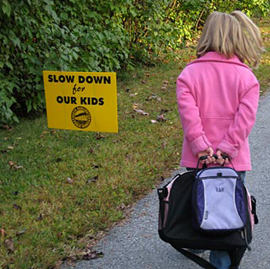The term “Safe Routes to School” was first used in Denmark in the late 1970s as part of a very successful initiative to reduce the number of children killed while walking and bicycling to school. SRTS spread internationally, with programs springing up throughout Europe and in Australia, New Zealand, Canada, and the United States.
The first modern SRTS program in the U.S. began in 1997 in the Bronx, New York. In 1998, Congress funded two pilot SRTS programs through the US DOT. NHTSA issued $50,000 each for SRTS pilot programs in Marin County, California and Arlington, Massachusetts. In July 2005, Congress passed federal legislation that established a National SRTS program. The program, which was signed into law in August 2005, dedicated a total of $612 million to SRTS from 2005 to 2009.
To learn more about the current state of the National SRTS program, visit the National Center website.
A successful SRTS program benefits children and your community in several ways.

- When routes are safe, walking or biking to and from school is an easy way for children to get the regular physical activity they need for good health.
- Studies have shown that physically active kids have improved mood and concentration, a stronger self-image, and more self-confidence.
- Physically active kids also have fewer chronic health problems and report lower levels of smoking and alcohol consumption.
- It’s fun! Research shows that children prefer to walk or bike to school. There’s so much to see, smell, touch, and talk about. By walking with friends, children build relationships and learn more about their neighborhood, their friends, and themselves.
- SRTS initiatives help the environment by easing traffic jams and curbing air pollution. Fewer car trips also mean lower gasoline bills, a significant factor.
